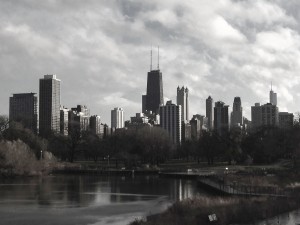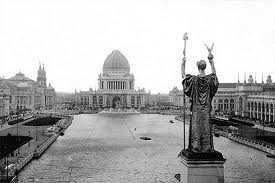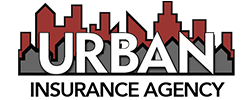 Chicago is often called the “Second City,” except by those that live in Los Angeles who are quick to remind us that their population has exceeded ours. By the numbers, Chicago’s population comes in at 2,695,598 where LA now tops out at 3,792,621. Chicagoans often had a problem with the idea of being second to New York but we accepted it, with grace, however watching LA’s population climb higher than ours, was a bit of a body-blow. But as long as it’s just us Chicagoan’s talking, I feel comfortable admitting that both NYC and LA are great American cities deserving praise and worthy of a visit. That said; Let me run through a list of some of the “Firsts” that Chicago brought to the world.
Chicago is often called the “Second City,” except by those that live in Los Angeles who are quick to remind us that their population has exceeded ours. By the numbers, Chicago’s population comes in at 2,695,598 where LA now tops out at 3,792,621. Chicagoans often had a problem with the idea of being second to New York but we accepted it, with grace, however watching LA’s population climb higher than ours, was a bit of a body-blow. But as long as it’s just us Chicagoan’s talking, I feel comfortable admitting that both NYC and LA are great American cities deserving praise and worthy of a visit. That said; Let me run through a list of some of the “Firsts” that Chicago brought to the world.
1859- This was a time when the railroad was the state-of-the-art mode of transportation. In fact The First Transcontinental Railroad had not yet been completed, that didn’t happen till May 10, 1869, yet Chicago was already a major player and saw the construction of the first Pullman sleeping cars.
1868- Chicago introduced the first Full-service railroad dining car.
1873 – As one born and reared in Chicago, I was surprised to learn that the first farm silo in America was built in Spring Grove, Ill., which is just a bit north of Chicago. As you would expect, the original silo has been replaced with a replica.
1875 — The Great Chicago Fire of 1871 destroyed much of our city, including The Palmer House Hotel; so when it came time rebuild, the new Palmer House was the first fireproof hotel ever constructed.
1885—- One of the things, besides our sports teams that Chicagoans take pride in is our architecture; so it is of special importance that Chicago is home to the First Skyscraper.
The Home Insurance Building wins the title because it was the first building to make use of structural steel in its frame. Ok, at 10 stories or 138 feet tall, it might not seem impressive by today’s standards, but back in 1885 it was a big deal. Of course in the great Chicago tradition of preserving our past- the building was demolished in 1931.
 1893 Columbia Exposition
1893 Columbia Exposition
I mentioned The Great Chicago Fire that began the evening of Sunday, October 8, 1871 and continued its rampage through Tuesday, October 10th. By the time the fire was under control in its wake were hundreds of lost lives and about 3.3 square miles in the very heart of the city lying in runes. But Chicago refused to stop it’s advance to be ranked as a “World-Class City,” so imagine the guts it took to take on constructing the largest, most spectacular worlds fair in history. A job that needed to be completed so soon after most of the city was rubble, a job that seemed impossible, a job that was successful.
The Columbia Exposition resulted in the construction of “The White City,” and aesthetic masterpiece to rival the greatest achievements of Europe. OK, one small difference, ours was primarily built of stucco covered wood rather than stone, built to be temporary, and, in a lesson Chicago had not yet learned, flammable. What the White City did best was amaze visitors with both its beauty and long list of “Firsts.”
1893—–First Ferris Wheel was proposed by Mr. Ferris to Daniel Burnham, who held the lead role in planing the fair and was desperate to find a centerpiece to match the wonder of the Eiffel Tower created for the 1889 World’s Fair in Paris. We have all been on Ferris wheels, but the one at the worlds fair was not only the first but able to carry 2,160 people, the largest ever built. To give you a sense of just how large it was, the largest Ferris wheel operating today is the London Eye, which can hold only 768 people.
Here are a few other Famous Firsts from the fair. It is hard to imagine both that so many products got their start at a single event, and how many of them of them are still a part of our lives today.
Aunt Jemima Syrup
Cracker Jacks F.W. Rueckheim created a mixture of popcorn, peanuts and molasses that was a big hit at the fair, so much so that in 1896 he began mass producing his treat under the name Cracker Jack .
Cream of Wheat cereal
Diet carbonated soda. Many years a version of the product called Diet Coke had me hooked, giving up my addiction I equate to going “Cold-Turkey” from Heroin.
Juicy Fruit gum. The Wrigley company, building and Ball Park and still a big part of Chicago.
Pabst Beer, Chicago likes it’s beer
Shredded Wheat, it also seem as if we are quite fond of cereal.
The hamburger. OK, so Chicago did not invent the idea of making a patty of ground beef, but the fair is where it was introduced to the United States.
The United States Postal Service used the fair to produce its first commemorative stamp set, as well as its first picture postcards.
US Mint offered its first commemorative coins: It was not like the treasury department was going to be out-done by the post office, they produced a quarter, half dollar, and dollar.
Creation of a company that lead to UL Labs. Rising out of concern for the massive and unprecedented use of electric lights, and Chicago’s history with fire, the insurance companies were reluctant to provide insurance coverage for the fair. Without the insurance protection banks would not make the needed loans, and companies would be terrified of investing. So an electrical engineer by the name of William Henry Merrill was hired to verify the safety of the electrical systems used for Colombian Exposition, capitalizing of that status he went on to found Underwriters Laboratories, which is the largest independent testing agency for electrical devices.
The First Ice Cream cone. born out of necessity when an ice Cream vendor fresh out of cups joined forces with a guy with Waffle making stand.
The Electric Dishwasher. Yes there had been some manual cranked versions that never took off, but when Josephine Garis demonstrated her electric dishwasher people took notice. At first it was restaurants and large commercial kitchens, but over time they became a staple of most homes.
.
1905— The first Rotary Club in America was founded right here in Chicago.
1906- The first jukebox. The phonograph was invented by Thomas Edison in 1877 which played cylinders, records, the round flat discs came along about 15 years later. So when the Automatic Machine & Tool Company began manufacturing Jukeboxes they really were on the cutting edge of technology.
1914 —— The first cartoon character. Two Chicago artists named Wallace Carlson and Winsor McCay, created “Gertie the Dinosaur,” and by the following year, Carlson created a character he called “Dreamy Dud,” for Chicago’s Essanay Studios.
1914- — The first full-time film critic. Movies were the new great form of entertainment, and movie studios were turning them out in great numbers, in fact 1,400 Essanay Studios alone turned out over 1,400 movies in just 10 years. With so many films the Tribune hired, Jack Lawson as the first full time film reviewer.
1918—- The first parking garage with a ramp. As Chicago grew in size it also grew in height; so it was natural to need to provide parking on multiple levels. I assume it was that same year that saw the argument between a married couple, fighting over what floor they parked on as the wondering around search for their car.
1930— The first planetarium in the Western Hemisphere. Based on a large gift from Max Adler, in 1930 the Adler Planetarium opened to the public. Max immigrated to America and then made his fortune by marrying the sister of Julius Rosenwald, and becoming vice president at Sears Roebuck & Co. Julius went on to fund the Museum of Science and Industry, so Chicago has owes a great deal to that family.
1937— The first US blood bank was started right here in Chicago
1941— The first controlled atomic nuclear chain reaction. Right on the grounds of the University of Chicago, Dr. Enrico Fermi and a team of scientists began the Nuclear age.
1943—-First Deep Dish Pizza Of the list of things Chicago is famous for, deep-dish pizza is high on the list .It was Ike Sewell who created the deep-dish pizza in 1943. When he first opened, few knew what to make of his thick-cheesy dish, so he took to standing outside and passing out free samples, well it didn’t take long for us to get hooked. His restaurant named Pizzeria Uno (One) has been a Chicago Landmark ever since.
1946— The first air-conditioned office building. That title belongs to The Wrigley Building.
1955 First McDonald’s Franchise Ray Kroc was a sales rep for a milk-shake machine company. The company sold a machine that would allow a restaurant to make 6 shakes at once; so when he got an order for multiple machines for a single location he figured he needed to fly to California and find out what was going on at the McDonald’s place. Ray liked what he saw and figured out that their basic idea could be standardized and turned into a franchise, opening the first McDonald’s Franchise in Des Plaines, Illinois, on April 15th, 1955.
In a monumentally bad decision, McDonald’s tore it down, public outcry made them quickly realize their mistake; so they rebuilt it with a replica and turned it into a museum.
1960— The 1st of the Playboy Clubs, featuring bunnies, opened in Chicago. Playboy magazine was founded in Chicago in 1953 by Hugh Hefner. The publication featured photographs of nude women but also journalism and fiction by some of the nation’s most important writers, and it sold a lifestyle- of which the member’s only clubs were an extension
1961 Urban Insurance Agency is founded. The year was 1961 when Gerald Lubell began with a desk, single line phone and a commitment to offer low cost car insurance without compromising personal service. More than 52 years later, URBAN INSURANCE has grown to one of the larger auto insurance agencies in Chicago.
1969— The first expressway median rail service. When land is limited it makes sense to make the optimum use of the space. In that spirit, the Chicago Transit Authority (CTA) made use of the median in the Dan Ryan Expressway to run trains. Their idea to operate trains “up the middle” is now commonly used in cities all over the world.
1997— The Field Museum, with help from McDonalds and Disney, purchased Sue, the largest, most complete and best-preserved Tyrannosaurus Rex ever discovered. This T Rex was named after Sue Hendrickson, a paleontologist that discovered it in the summer of 1990. It seems as if a complete T Rex does not com cheap, in fact the winning bid was $7.6 million, thus the need for corporate sponsors
2008—- First Afro-American US President. Barack Obama who had made his home here in Chicago was sworn-in to office Jan 20th 2008.
Since Urban Insurance Agency was founded in, and calls Chicago home, I wanted to share a few of the firsts that helped to build our town into a true world –class city. Please feel free to add to the list other firsts that I missed.
Larry Lubell
Call 800-680-0707 or click here to get your free auto insurance quote.
Urban Insurance Agency 800 N Wells St Chicago, IL 60610
(312) 664-8088 Additional Insurance Information

